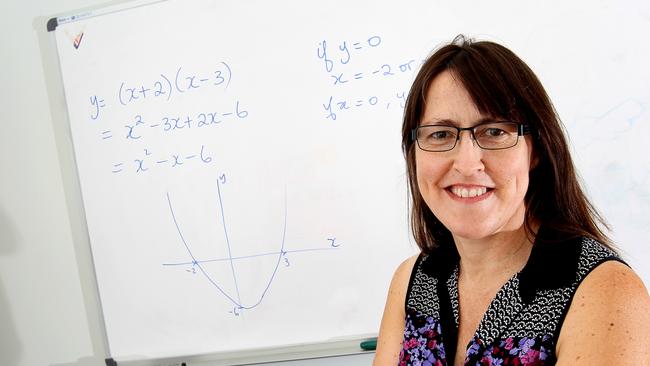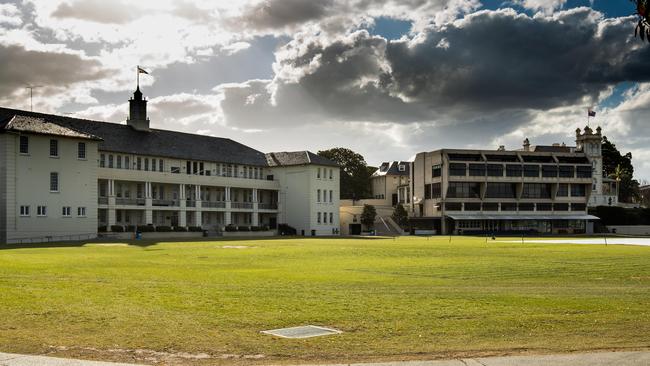Sydney private schools fees tipped to hit $50k a year as some double in a decade, public funding to stay
With some of Sydney’s top schools tipped to charge fees of more than $50,000 a year by 2033, the Federal government has no plan to scrap funding them. Search your school and see how much your fees could be.
Education
Don't miss out on the headlines from Education. Followed categories will be added to My News.
Federal Education Minister Jason Clare has ruled out scrapping funding for private schools that choose to charge fees amid projections that tuition costs could blow out to $60,000 in the next decade.
Education experts at UNSW’s Gonski Institute have called for the federal government to stop funding schools that choose to charge fees, or fully funding of private schools on the proviso they’d be free for all students to attend.
But Minister Clare said the model is “not something we’re considering”.
“My focus is making sure that all our schools are on the path to full and fair funding,” he said.
“For non-government schools, right across the country, they’re either at 100% of that Gonski (school resourcing standard), or they’re above it, and on a pathway down to 100% by the end of the decade.
“Public schools aren’t ... and this (National School Reform) Agreement that we strike next year is our last best chance to get this right.”
FEES TIPPED TO SKYROCKET
Over the next decade schooling fees will rise by 30 per cent due to inflation, which would mean it would cost $357,000 for 13 years of schooling for a child who started prep at a private school this year, according to modelling undertaken by education investment service Futurity.
Under those assumptions, two of Sydney’s highest fee schools will charge more than $57,000 for a single year of schooling in 2033 – The Scots College and SCEGGS Darlinghurst.
However, history shows many non-government schools increase fees faster than inflation. Sydney’s Consumer Price Index rose 30 per cent between June 2013 and June 2023, but Year 12 tuition fees rose by 44 per cent and 45 per cent at Scots and SCEGGS respectively during that time.
At some schools fees more than doubled over the last decade, including at Waverley College, Mercy Catholic College and St Leo’s Catholic College.
Director of UNSW’s Gonski Institute Kim Beswick said the government should seriously consider new funding models that would prevent schools from charging fees altogether in order to receive government funding.
“You couldn’t design a better system for segregating people along socio economic lines than our current education system,” she said.
“Long term, I really think we need to work towards a model where fees are not the constraint on choice that they are at the moment.
“We should be working toward a model where either a school accepts full government funding on the same basis whether you’re an independent school, Catholic school, government school, or you charge fees … that ultimately would be the fairest thing.”

Education researcher Dr Rachel Wilson also argued for a funding model that treats public and private schools the same way.
“It is outrageous that we have two different regulatory systems for schools in this country,” she said.

“Value for money for school fees is very, very low, because when you account for socio-economic factors, the performance of government schools is roughly equivalent to the non-government schools.”
Association of Independent Schools of NSW Chief Executive Margery Evans said recent increases to school fees are driven by “higher salaries for teachers, salaries for more non-teaching staff such as counsellors, skyrocketing insurance premiums, the use of more sophisticated technology in schools … and a trebling in interest rates over the past 16 months which has increased repayments on school building projects”.
Decreased funding over the next decade for some schools due to changes in how parent income is measured are also playing a role, she said.
“Fee increases at low and mid-fee Independent schools have been kept to a minimum, as these schools are very mindful of the impact fee rises have on low to middle income families,” Ms Evans said.
Futurity’s figures show for a year of secondary schooling in 2033, Sydney parents will pay $5,357 in tuition fees on average in the Catholic system, $17,524 in the Independent sector and $462 at a public school.
Futurity Investment Group CEO Kate Hill said the estimates are “actually quite conservative”, with wages failing to keep up with higher than average inflation in the education sector.
“If we continue to see prices rise at twice the rate of wage growth, there will be a number of parents whose desire to send their children to a particular type of school just won’t be able to become a reality,” she said.
“The sooner parents and prospective parents think about this cost and what it could mean for their family going forward, and start putting money aside, the better.”





